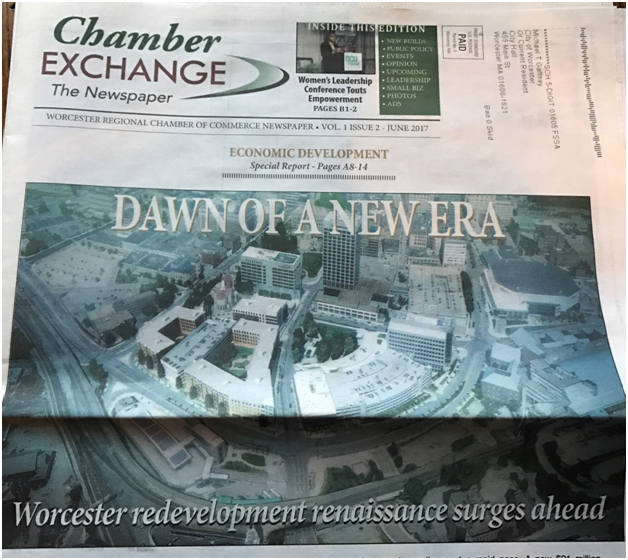By Michael Gaffney
As we see new buildings finally going up from the nearly 10 year old City Square Project, we keep hearing about a renaissance in the City. But what does it mean to you, the taxpayer?
From the above Chamber Exchange Newspaper:

And more from the above Chamber Exchange Newspaper:

In order to spur investment, in just two projects, the City handed out $7.2 million in tax relief to big business. The reason is simple, our tax rates are too high to be competitive.
But it is worse, in the last four years, taxable property has shown little growth at just 6% while nontaxable (nonprofit) property has more than doubled by 104%:
| Taxable Property | Nontaxable Property | |
| 2013 | $ 10,878,856,279.00 | $ 2,842,882,238.00 |
| 2017 | $ 11,491,118,106.00 | $ 5,786,450,287.00 |
| Growth | $ 612,261,827.00 | $ 2,943,568,049.00 |
| Growth rate | 6% | 104% |
A simple illustration shows that nontaxable (nonprofit) property growth has overwhelmed our tax base. Nontaxable (nonprofit) properties aren’t just colleges and churches moving into our downtown, they also include the many social service group homes that are moving into our neighborhoods and diminishing the quality of life of our residents.

While nontaxable (nonprofit) property growth has more than doubled, our tax payers have seen their tax bills increase 11% while inflation rates and wages over the same period have remained negligible.
| Tax Levy | |
| 2014 | $ 289,453,784.00 |
| 2018 | $ 321,698,114.00 |
| Tax growth | $ 32,244,330.00 |
| Tax growth rate | 11% |
Every budget has continued an upward trend in the tax levy for diminishing services to the taxpayer. City Manager’s new “seven point plan” calls for massive increases in spending and reserves that will continue to increase the tax levy.

So, what does it mean to you, the taxpayer?
The alleged renaissance is being paid for off the backs of the taxpayers. The reality of the actual data cannot be refuted by anecdotal information or the near conclusion of a downtown project that was begun nearly a decade ago or Tax Increment Financing (TIF) plans that enable big businesses to receive an average exemption of 80% for 20 years. While nontaxable properties continue to grow, so do the TIF programs to big business, thus further pushing the tax burden on residents and small business.
High taxes are a competitive disadvantage to taxpayers, but are a boon for nonprofits. As high taxes are a factor in the purchase of taxable property, they are not for nonprofits or businesses receiving TIFs. High taxes lead to reduced property values and an exodus of struggling families and businesses which are replaced by nonprofits or force the City to increasingly use TIF plans to lure in investors. As shown above, nonprofit growth has more than doubled resulting in higher taxes. As nonprofits continue to take properties off the tax rolls and TIF plans are increasingly used, the burden increases for the taxpayers and will continue to do so exponentially.
Our future articles will discuss the Mayor’s Tax Policy Committee Report and the Manager’s “seven point plan.” Both seek to increase taxes and find new ways to tax you.






